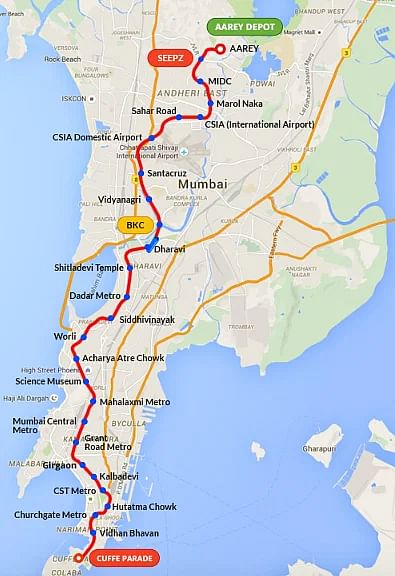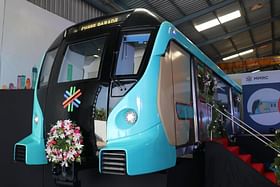Now that the Mumbai’s underground Aqua Line 3 is getting ready for commissioning, trains on Colaba-Bandra-SEEPZ Line will feature a front evacuation system to facilitate the safe exit of passengers from the train in case of an emergency, a report in Indian Express said.
The mass rapid transit system (MRTS) worldwide presently follow either side-evacuation systems or front-evacuation systems.
In side-evacuation system, passengers are directed to a walkway positioned alongside the track. People get out through normal doors and proceed onto the walkway, which leads them to the platform of the nearest metro station.
In the front-evacuation setup, evacuation doors are positioned both at the front and back of the metro train. These doors open upward on hinges, and a ramp is deployed to connect with the railway tracks, providing a means for passengers to safely disembark during emergencies.
Passengers have the option to walk through the entire length of the train and exit from the either end of the metro.
The front-evacuation system is easier for passengers as either they have to walk through the coaches or on the track.
Also, the front system ensures smooth evacuation as the doors are regulated by motormen, thereby, preventing stampedes.
This system is currently implemented in various metro networks worldwide, including London, Paris, Berlin, Washington, Singapore, Dubai, China and Bangkok. Additionally, it is also being used in the Delhi Metro, Kolkata Metro (N-S), and Hyderabad Metro systems.
As per the Mumbai Metro Rail Corporation (MMRC), which is the project implementing authority, the end evacuation system has been adopted, rather than the side evacuation system, since Mumbai Metro Line 3 is underground.
Mumbai’s First Underground Metro
The Colaba-Bandra-SEEPZ Metro Line 3, also known as Aqua Line, will be the first underground metro line in Mumbai and also one of the longest underground continuous stretches in India.

The Mumbai Metro Line 3 spans approximately 33.5 km, from Colaba (Cuffe Parade) in the extreme south of the city through Bandra, ending within the Special Electronics Export Processing Zone (SEEPZ) in the north-central.
The Aqua Line connects Mumbai’s most congested regions and key financial hubs such as Nariman Point, Bandra-Kurla-Complex (BKC), Fort, Worli, Lower Parel and Goregaon, covering a total of 27 stations from the south of the western metropolis to the north.
The Mumbai Metro Line 3 is currently under construction with 87 per cent of the work finished and is expected to be operationalised in parts from the end of this year onwards.
The first phase of the project between BKC and SEEPZ is expected to be ready and open to the public by December this year.
Earlier on 26 May, the MMRC awarded the contract for operations and maintenance of Mumbai Metro Line 3 to the Delhi Metro Rail Corporation (DMRC).
The DMRC will manage daily operations, including that of the operations control centre or OCC, the Depot Control Centre or DCC, stations, train schedules, system management and passenger safety for a period of 10 years.


